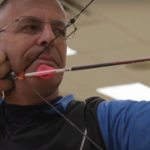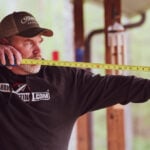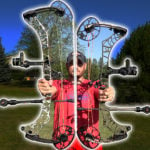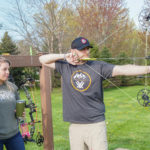One of the fundamental keys to an enjoyable shooting and bowhunting experience starts with choosing the right bow for your needs.
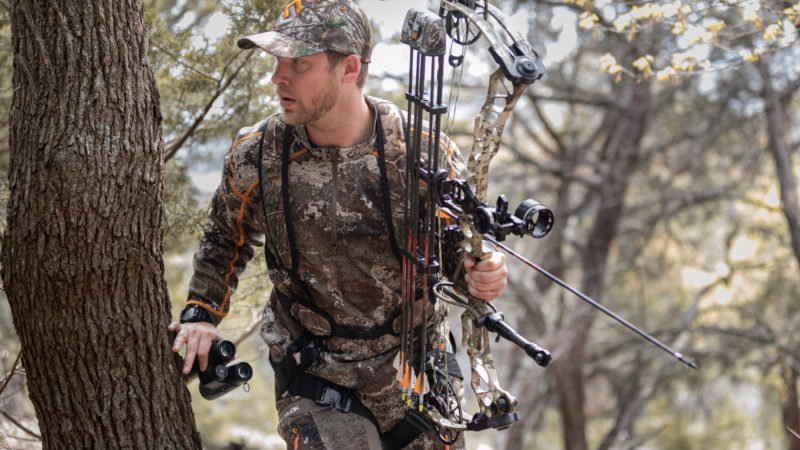
This includes not just the size and shape of the bow itself, but also factors such as cost, warranty and the type of hunting or shooting you’ll be doing.
For example, bowhunters pursuing whitetails face different challenges than those who hunt open country game out West and in parts of Canada.
Ideally, the bow you select should take these challenges into account. With hundreds of different bows in the market it’s important to consider all of these factors when making a purchasing decision.
HOW MUCH DOES A BOW COST?
Most new bows range anywhere from $400 to $1,000 depending on the exact make and model.
While many bow hunters prefer the more expensive models, which do offer a variety of upgraded features, a $400 bow will kill an animal just as well as a $1,000 bow provided the arrow hits its mark.
So when setting out to make a new bow purchase it’s important to establish a budget first and make sure you’re looking into the bows that fit within your means.
Much like looking for a new car, you want to compare products that are within your price range.
Also, keep in mind that most bows do not come with any accessories on them. Items such as arrow rests, sights, quivers and arrows are going to be additional charges above and beyond the cost of the bow.
Although many manufacturers are beginning to put together accessory packages that can be purchased as a bundle along with your new bow to make the purchasing process easier for beginners.
For example, Mission Archery has three accessory packages available depending on your needs and budget.
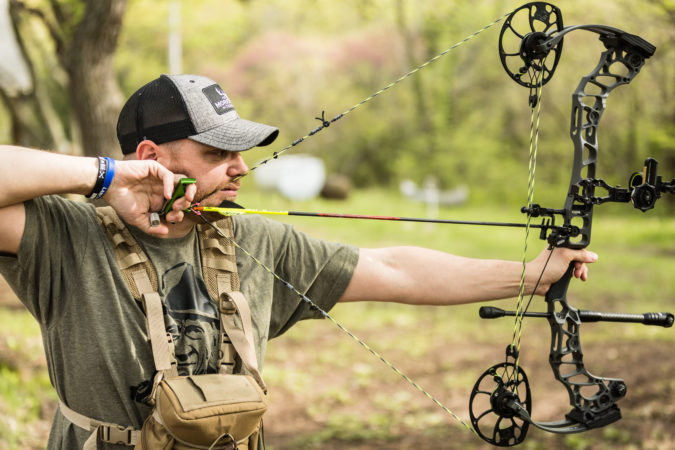
WHO MAKES THE BEST BOW?
The age old question of who makes the best bow is one that often debated on various bowhunting forums and around the counter at local bow shops, but has no clear answer.
Much like the Ford vs. Chevy debate, many people are extremely loyal to “their” brand of bow and feel that it’s the best.
Truth be told, there are a lot of great bows and great bow companies in today’s market, all of which have their pros and cons.
One of the most important keys to finding the right bow for you is to shoot and look at as many bows as possible in order to find the one you like the best.
SHOT DISTANCE AND TYPE OF HUNTING
Whitetail Deer are the most popular game animal in North America and are pursued by bow hunters more than any other animal species, so we will start there.
While many hunting videos often depict shots at whitetails of 30, 40 and 50 yards most surveys indicate that the average shot at a whitetail deer is in fact less than 20 yards.
Whether you’re hunting big woods or small woodlots, bowhunting for whitetails is all about getting close. This means the perfect whitetail bow doesn’t have to be a long-range bomber.
When hunting in open settings, including much of the terrain found in Western states, it is common to face long shots. Many antelope, mule deer and elk hunters are routinely faced with shots of 50 yards or more.
As a result, a faster bow can improve accuracy by reducing the effects of misjudged distance.
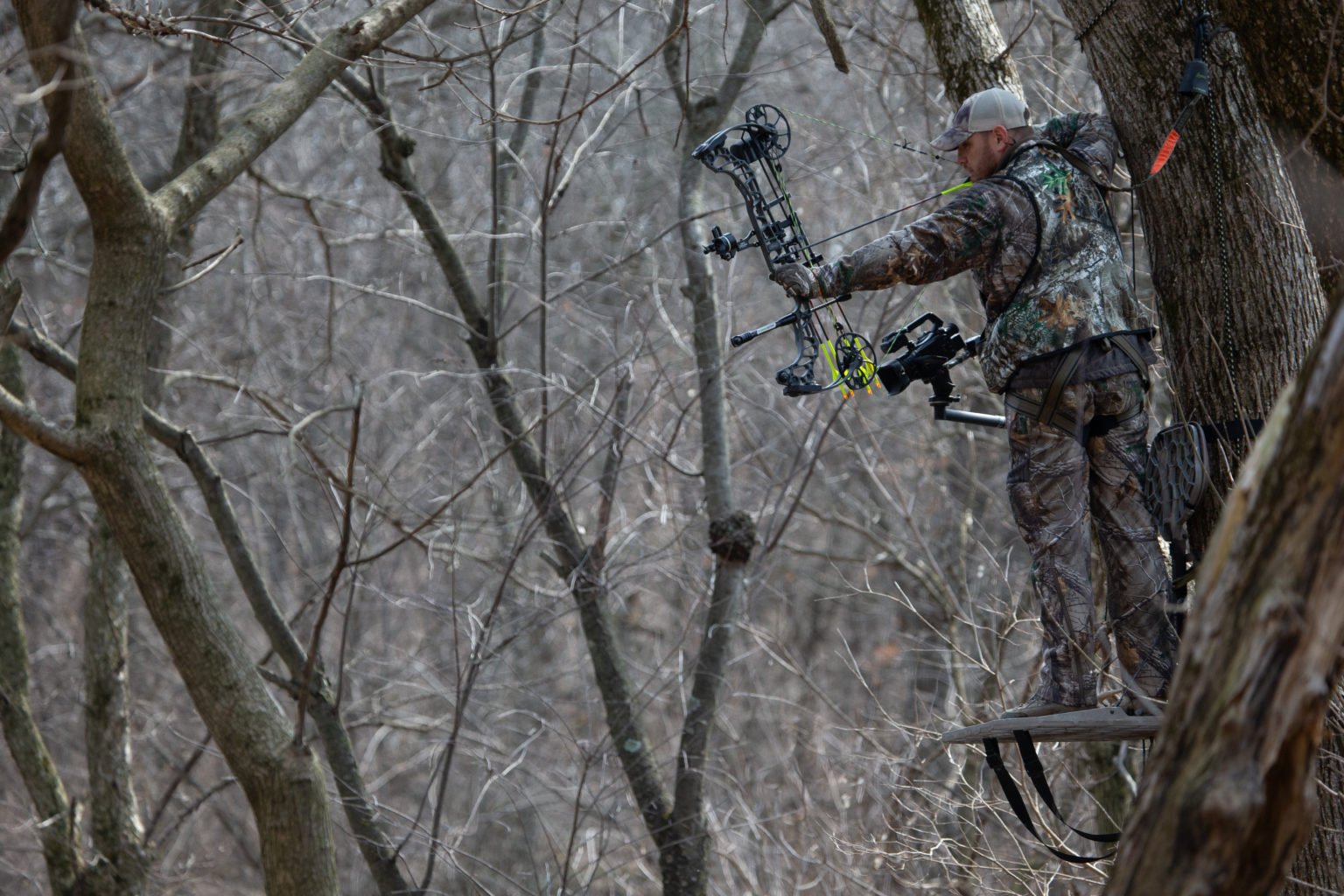
Also, because most Western hunts take place with your feet on the ground, it is less likely that you will have to fight through heavy tissue to get to the vitals of the game you hunt.
Penetration is still important, especially on elk, but in many cases, it is not the most important factor contributing to whether you make a clean kill – range estimation and a fast arrow are a much bigger deal.
So when you compare the Western hunter’s challenges to those of an Eastern whitetail hunter, you can see a big difference. Their bows should reflect this difference.
WHAT DRAW WEIGHT SHOULD YOU SHOOT?
Make no mistake – draw weight is important. As a general rule of thumb, you should shoot the heaviest weight you can handle accurately. Of course, the way we define “handle accurately” is important.
As a basic rule of thumb you should be able to draw your bow back without having to lift it over your head or exert a great amount of force, and be able to hold it back for at least 60 seconds before letting down.
For most adult males, the optimal draw weight for bow hunting is between 60 and 70 pounds. Although you can certainly kill most big game animals with less weight, more is most certainly better.
Regardless of shot distance, one thing is constant with deer hunting from a treestand: the aiming point and the downward shot angle.
The aiming point is a pocket bordered tightly on one side by shoulder and leg and above by heavy muscle, ribs and cartilage.
One doesn’t have to miss the sweet spot by more than a few inches to be into heavy tissue – a situation where penetration becomes critical.
Further, the need for an exit hole is obvious to improve blood trailing and to produce the maximum internal damage for a quick kill. For optimal penetration on both good as well as poor shots, more draw weight is necessary.
When hunting western game, I see no real difference. Because the typical western hunt is more active than a tree stand hunt, the bow hunter is probably looser and his muscles are warmed up.
He should be able to handle a heavier draw weight easier. Again, shooting the maximum draw weight that he can handle accurately makes a lot of sense.
He can turn draw weight into arrow speed, whereas the whitetail hunter tries to turn it into penetration by selecting a heavier arrow.
Most modern compound bows are adjustable in 10 pound ranges of draw weight, with 60-70 pounds being the most common.
In order to adjust the draw weight of your bow you simply use an allen key to tighten or loosen the limb bolt of your bow, making sure to adjust both sides evenly. In most cases, a full turn of the screw will adjust your bow by 4 pounds in either direction.
CHOOSING THE RIGHT BRACE HEIGHT
Brace height is the distance from the throat of your bow’s grip to the bow string. This is one of the benchmark measurements that people often use when comparing bows.
As a general rule, bows with longer brace heights will be slightly slower than those with shorter brace heights. However, bows with very short (low) brace heights can often be more difficult to shoot and are referred to as being less forgiving.
Super low brace heights are awesome when the bow is attached to a shooting machine. Unfortunately, we aren’t machines. A low brace height has a downside.
The longer the arrow is attached to the string during its forward travel, the greater its opportunity to be influenced by poor shooting form.
The most forgiving possible bow is the one that loses all contact with the arrow as quickly as possible.
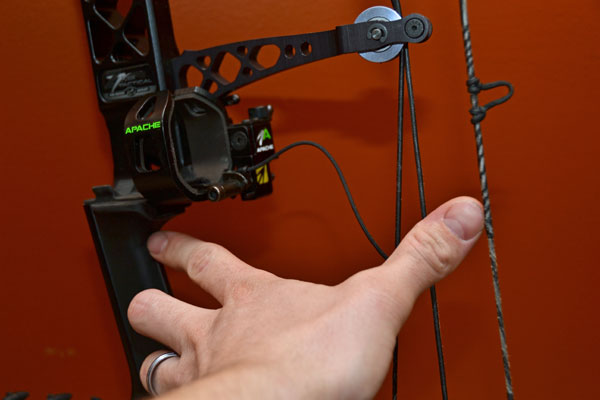
When you consider that most shots at whitetails will not be longer than 25 yards, the range estimation error forgiveness that comes from raw speed is not the most important factor in the shot.
However, many shots will be taken at somewhat awkward angles from a tree stand (at least they will be different angles from those practiced in the backyard for most of the summer). A reasonably forgiving bow is more beneficial than a super-fast bow under these conditions.
Most bow hunters find that a bow with a brace height of 6 1/2 to 7 1/2 inches seems to be a good combination of both speed and forgiveness. For this reason, most modern bows will fall within this range.
However, today’s bows are easier to shoot accurately at low brace heights than those we shot only five years ago. This is due to improvements in cam alignment (they don’t lean) and vertical nock travel. The bows simply produce better arrow flight so they don’t need to be as forgiving.
Also, with parallel limbs and string suppressors, low braced bows don’t feel nearly as harsh during the shot.
The western hunter can take advantage of these design improvements to push the envelope on bow design and select bows with brace heights under 7 inches in order to gain more speed.
AXLE TO AXLE LENGTH
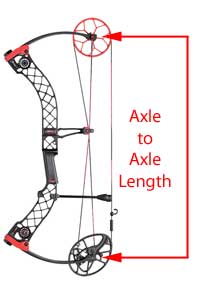
The stability of a bow is related to its size and its weight distribution. Long, heavy bows are more stable and more accurate than short, light bows. It is physics, not opinion.
When you look at professional archers that shoot competitively or at very long distances you’ll routinely see them using bows that are anywhere from 38 to 44 inches from axle to axle. So why is it that most hunting bows are 30 to 34 inches axle to axle?
Typically, whitetail hunters need to be ready for quick shots and awkward angles much more than they need to be ready for long shots.
Worrying about an inch or two of axle-to-axle length when it comes to stability is counterproductive. Whitetail hunters will do just fine with short bows. Once again, most of our shots are happening well under 25 yards.
Western hunters who have to carry bows long distances each day appreciate the lighter weight of these pocket bows and thus they have also become very popular with the foot hunting set – and rightly so.
Short, light bows may not be for everyone, but if you find that you can shoot them well – and you probably can – they are more maneuverable in a tree and lighter to carry across the ground.
CHOOSING A CAM SYSTEM
Much like the debate over which bow company is best, many bow hunters argue over which type of cam system is best.
With a variety of cam systems on the marketing including single cams, dual cams, hybrid cams and binary cams the technology can often be confusing for beginners.
It is important to understand that each of these cam systems has its benefits and its drawbacks.
Some bows will have a very aggressive draw cycle that loads up quickly before abruptly rolling into the valley, while others will have a much smoother draw and longer valley.
Some will have a rock solid back wall while others will feel spongy at full draw. The point here is that it is critical to shoot as many as possible in order to find the one that feels the best for you.
Which many archers will argue that the single cam bow has less tuning problems than the dual cam, or the binary cam produces better nock travel or kinetic energy, most of those differences are so minute they will never been seen or felt by the average bow hunter.
With the advent of stretch-resistant synthetics and custom string shops that know how to make great strings and harnesses, the stretch issue and the timing issue is pretty well a thing of the past.
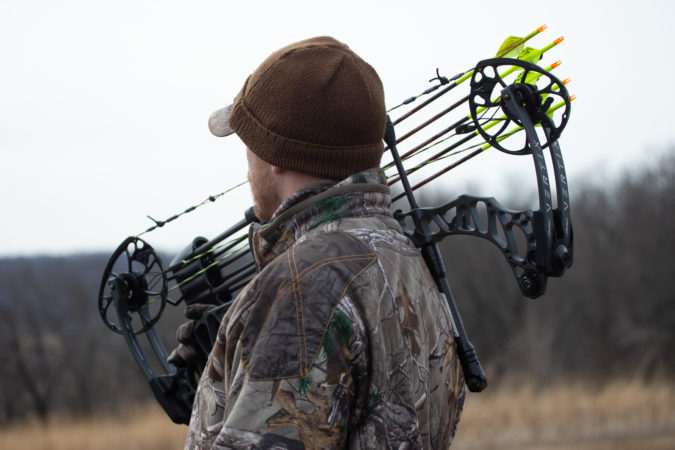
BOW LET-OFF
Most of today’s bows feature 80% let-off. What that is means is that when at full draw the holding weight of the bow is only 20% of what the peak draw weight is. So in the case of a 70 pound draw weight, the archer is only holding 14 pounds while at full draw.
Having a high let-off of 80% means you will be able to hold the bow at full draw longer, and be more accurate. While bows with lower let-off will typically be faster, for most archers having the ability to be at full draw longer, should the need arise, is of more benefit than a few extra feet per second.
THE GRIP
One of the most important intangibles of any bow you purchase is the grip. Make sure your hand is very comfortable in the grip because you will never be able to relax as fully as needed to shoot well if you are uncomfortable.
How the grip feels will ultimately determine the sale. Everything else can be perfect but if the grip feels like (you know what) you’re probably not buying the bow. There are too many out there with the right specs and a great grip to be stuck with one that feels bad.
Since we are talking about grips, we should also consider the material it is made out of. Spongy, soft and tacky grips will make it harder to achieve a torque-free shot, but many bow hunters still prefer them because they feel “warmer” on a cold stand. You can’t argue that fact, but they are definitely less accurate.
Anything that can catch your hand and cause the skin or glove material to stretch during the draw will make the bow twist during the release as this tension is relieved. Shooting with a slick grip, whether it is wood, plastic or even metal will help reduce bow torque and make you a more accurate shooter (even if it is colder on those late season hunts)
BOW ACCESSORIES
Once you’ve chosen the right bow for you it’s time to start thinking about all of the various accessories that you’ll want to mount onto it before you can start shooting. Click here to learn all about what bow accessories are available and which are right for your application.
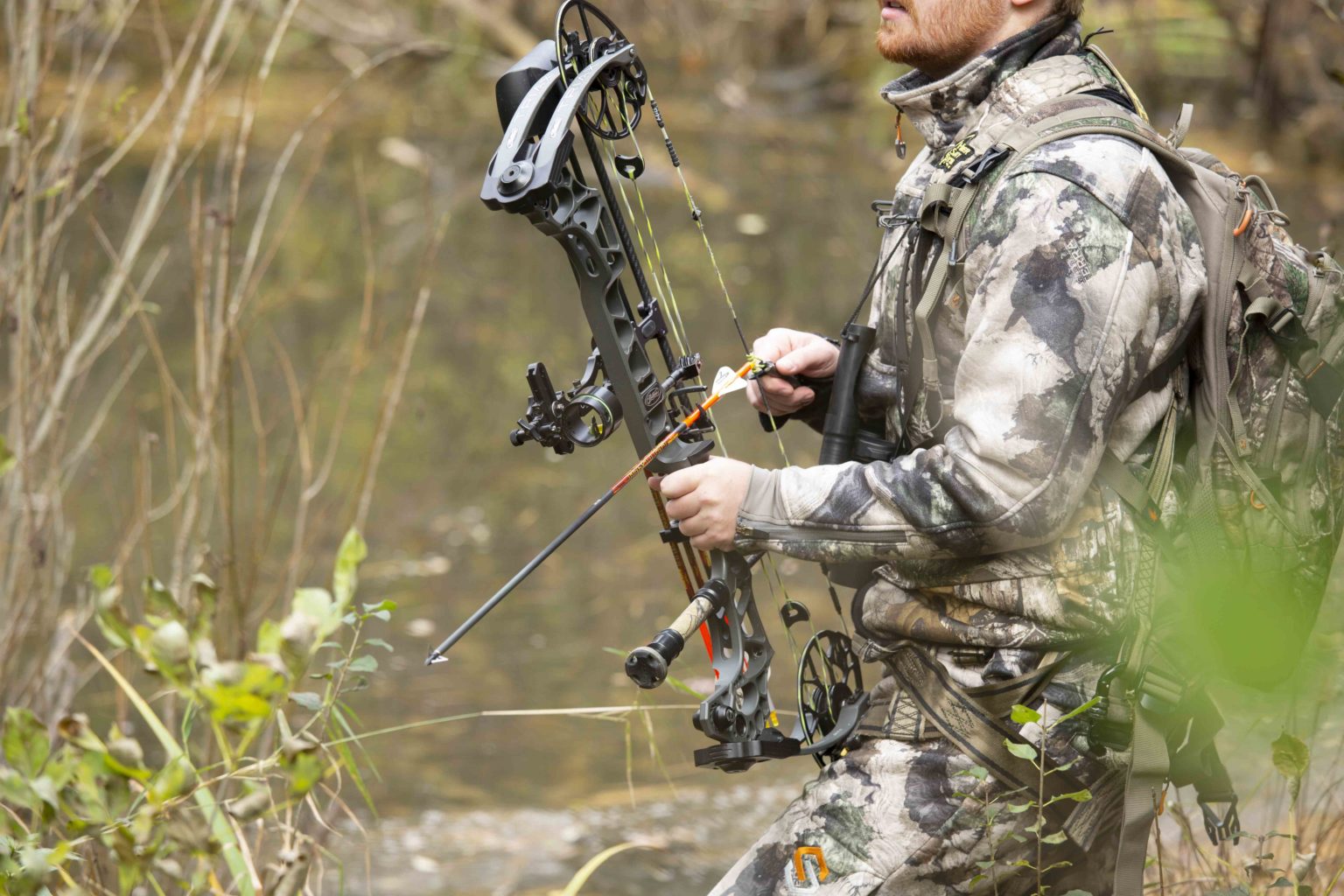
CONCLUSION
Over time your bow will become a natural extension of your being as a hunter. You must be comfortable with and confident in your weapon of choice when it comes time to lose and arrow at your next target, which it be made of paper or flesh and bone.
Selecting a bow that fits your needs will offer you a more enjoyable shooting experience and, God willing, a freezer full of meat at the end of the next archery season. So be sure to take your time, examine your options and pick a bow that you can be happy with for years to come.

 By
By 